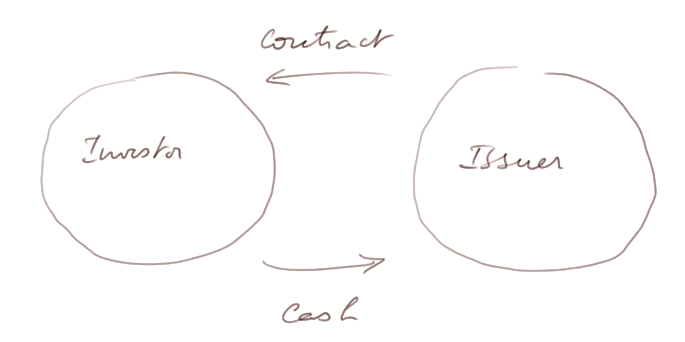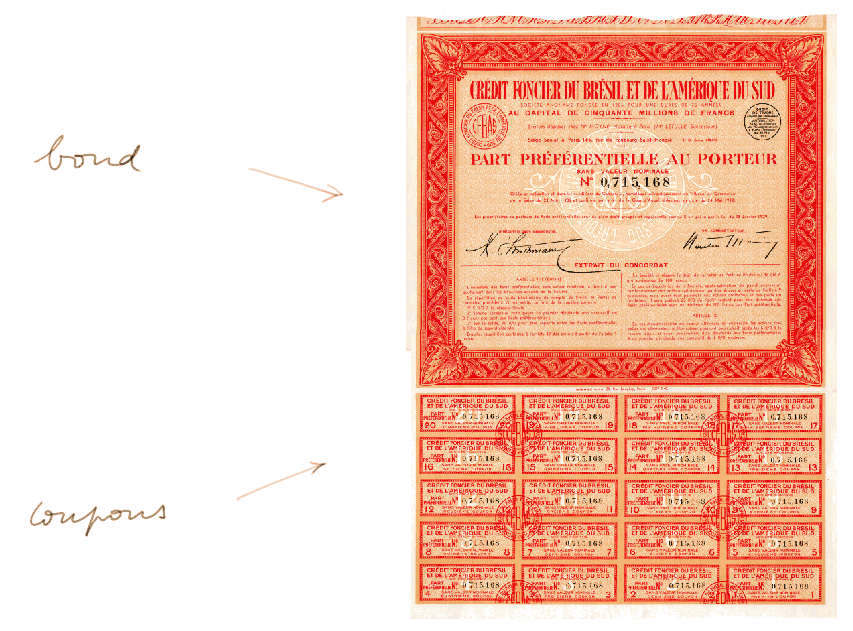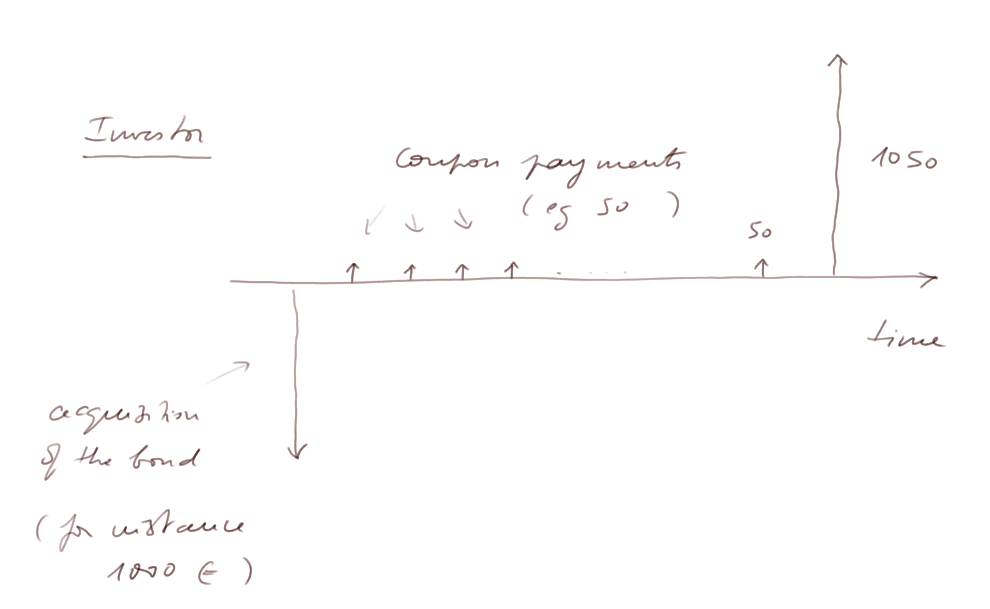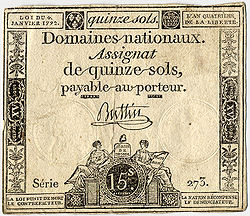Elementary finance
Stocks and bonds
Text
introduction
contracts between investors and issuers
shareholders
bondholders
coupons
cash flows of a bond
terminology
primary and secondary markets
difference for firms
guarantee
Assignats
Firms have several ways to obtain financing:
- getting cash via issuance of new shares of stock
- getting cash via issuance of bonds (or just borrowing from a bank)
- retaining all or part of their profit (instead of distributed it as dividends)
- delaying payments to suppliers
The last two methods were studied in our accounting course.
Issuance of shares of stock and issuance of bonds correspond, as for any financial products, to contracts between investors and issuers.

The contracts corresponding to new shares of stocks and to bonds present some important differences in terms of:
- property
- guarantee
- rights
In theory, each shareholder is the owner of a part of the firm. If there are numerous shareholders, they vote in general meetings, but for many decisions they are represented by directors. They receive dividends when the board of directors decides to distribute some.
However, when they are numerous (as for shareholders of corporations listed on a stockmarket), they don't have the right to visit the firm's premises (plants, laboratories...). And they do not have access to internal detailed information, like cost accounting. So this "ownership" is more theoretical than real.
Borrowing money. We traditionally distinguish two ways for firms to borrow money:
- from banks: it is called "financing via intermediaries"
- directly from financial markets, dealing with investors, who become bondholders: it is called "financing without intermediaries"
The world of finance took a big turn after the Thatcher/Reagan revolution around 1980, when finance without intermediaries developed tremendously.
Three developments took place in parallel:
- deregulation: less rules constraining economic activities
- desintermediation: direct access for firms to financial markets
- pulling down of walls between various types of financial activities (mainly investment banking and retail banking)
In French, the third evolution is called "décloisonnement". Hence the three developments, in French, are called "les 3 D".
Bondholders are entitled to regular payments, called coupons, because bonds used to be sheets of paper, from which you would tear off "coupons" to take to the bank managing the firm's bond and get your payments.

a financial security (close to a bond) and its coupons
The cash flows can be represented as follows:

Terminology. It is important to know and understand well the various names given to investors and to borrowers, because at first some may appear counterintuitive:
- An investor is also a buyer or a lender.
- An issuer is also a seller or a borrower.

So, in finance, you can sell or buy debt. And you can have debt on the asset side or on the liability side of your balance sheet. On the asset side, it is a contract representing money someone owes you. On the liability side, it represents a debt you have to somebody else.
To buy some debt is either to lend money to a borrower, or to acquire the corresponding financial asset from another lender.
This last remark leads us naturally to the concepts of primary and secondary markets.
A new share or a new bond is said to be issued on the primary market.
Once they are in the pocket of investors, they can be resold. It is said, then, that they are traded on the secondary market.
The markets used to be physical, and to be the same location: big buildings housing stockmarkets in large cities.
The French term for stockmarket is "Bourse". The name derives from the Van den Beurze family in Belgium in the XIIIth century, in the house of whom big merchants met to carry out commercial operations.
Nowadays, stockmarkets are increasingly immaterial, a growing part of trades being done on electronic networks.
There is a big difference for firms between the primary and secondary markets:
- in a new issuance (therefore on the primary market) money flows into the firm (which issues the security)
- on the secondary market, the initial issuer receive no money from a trade
Yet, firms are concerned about the price of their stocks on the secondary market, because it will be the price they will get for new shares if they decide to raise more capital.
Guarantee. A lender may or may not receive guarantees during the life of his loan.
A well known example is the mortgage on a loan received by a borrower to finance a housing project (for instance buying an apartment flat). The lender has a "mortgage" on the real estate asset, the effect of which is that if the borrower defaults on his loan, the lender will become the owner of the building.
Raising cash may be guaranteed, for the lender, by financial assets brought in by the borrower. This is the case for instance of financial operations called "repos".
Assignats. During the French Revolution (1789-1799), the government borrowed money (gold) by issuing Assignats, intended to become paper money.

source: wikipedia Assignats
They were "guaranteed" by Church properties that the State had confiscated in 1790. Some "grands bourgeois" did become owners of Church properties (see, Balzac's novel "Eugénie Grandet"), but the overissuance of Assignats lead to the ruin of many small holders.
Screens of the video
|
|
|
screen number display zone |
Course table of contents
Contact